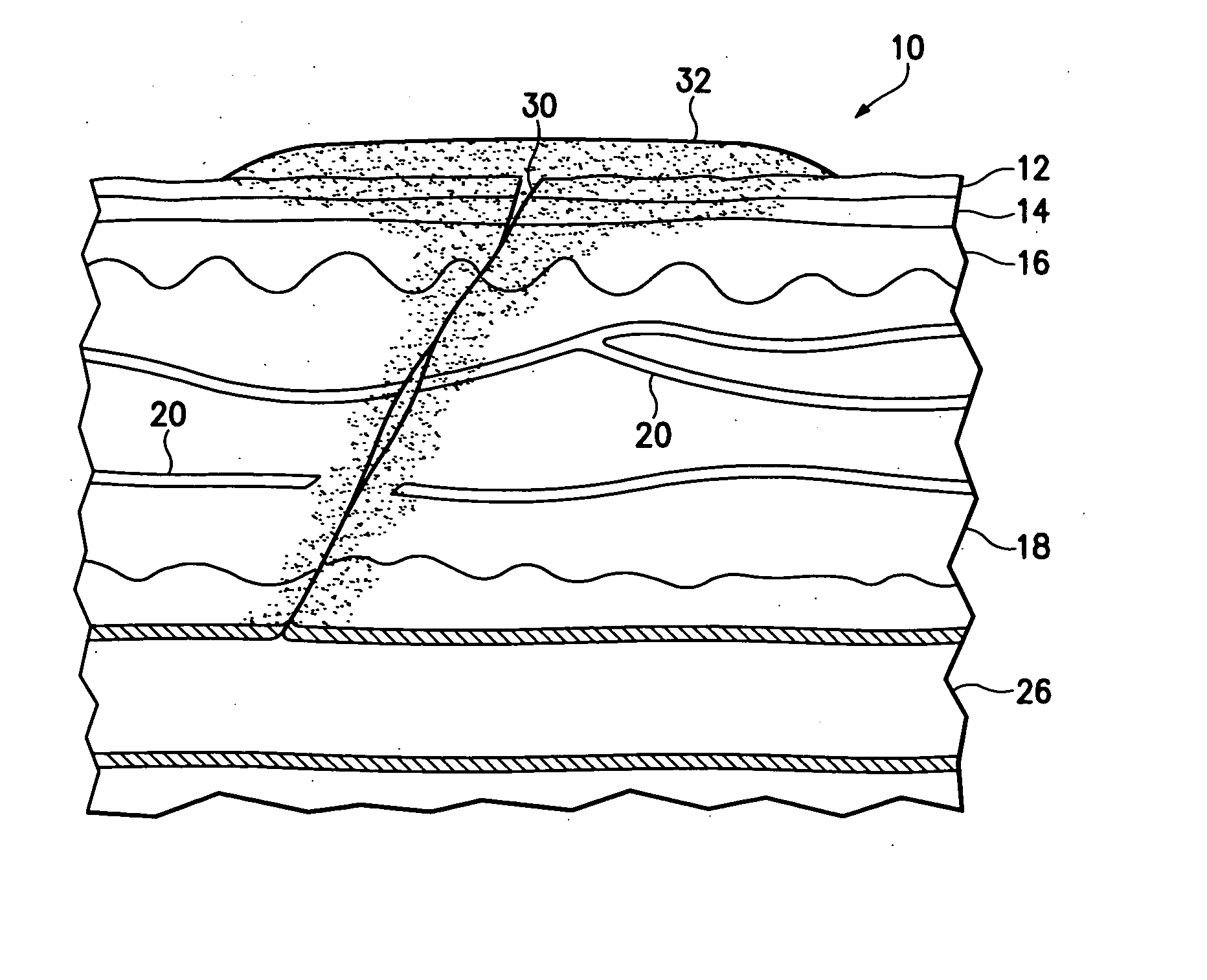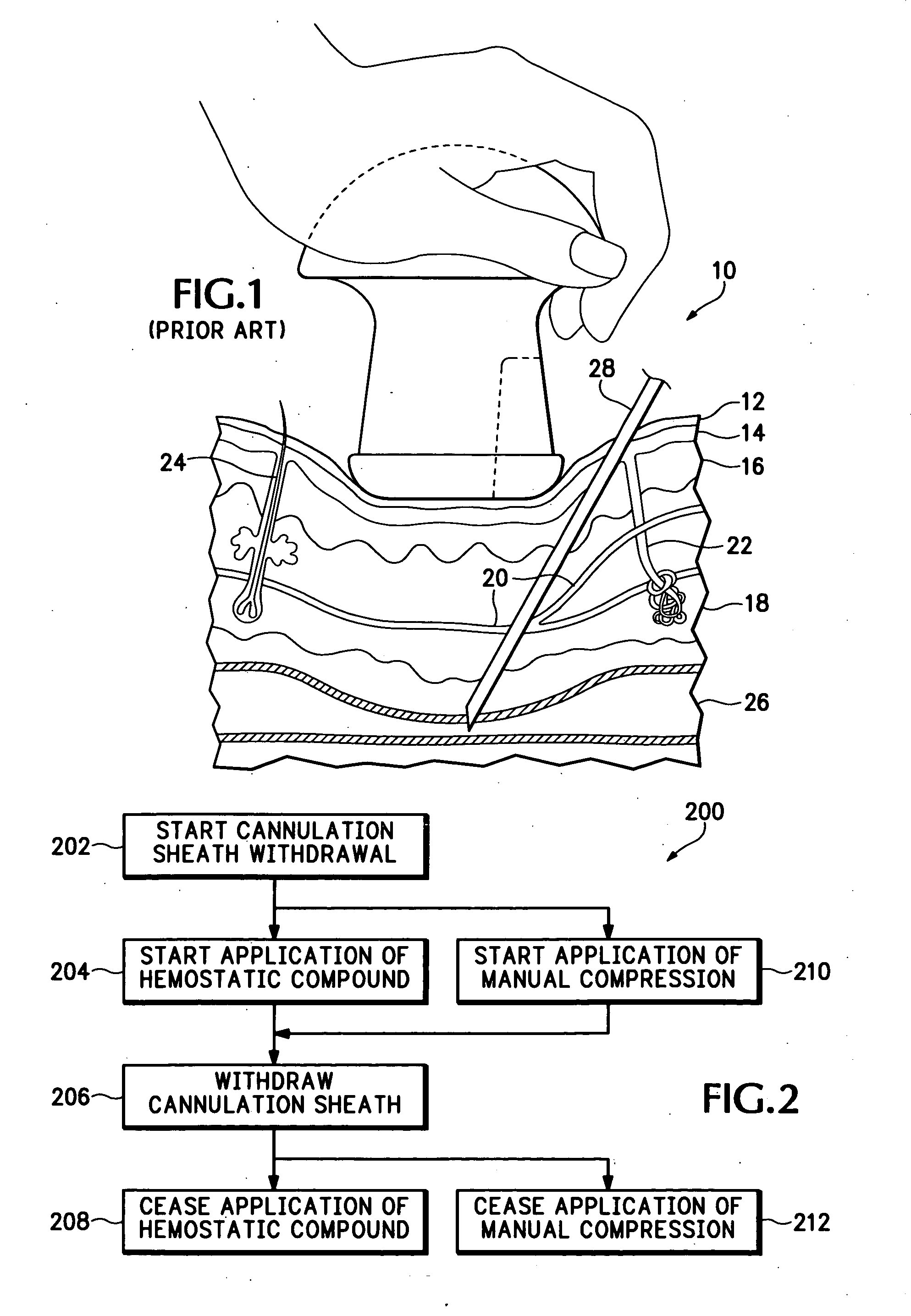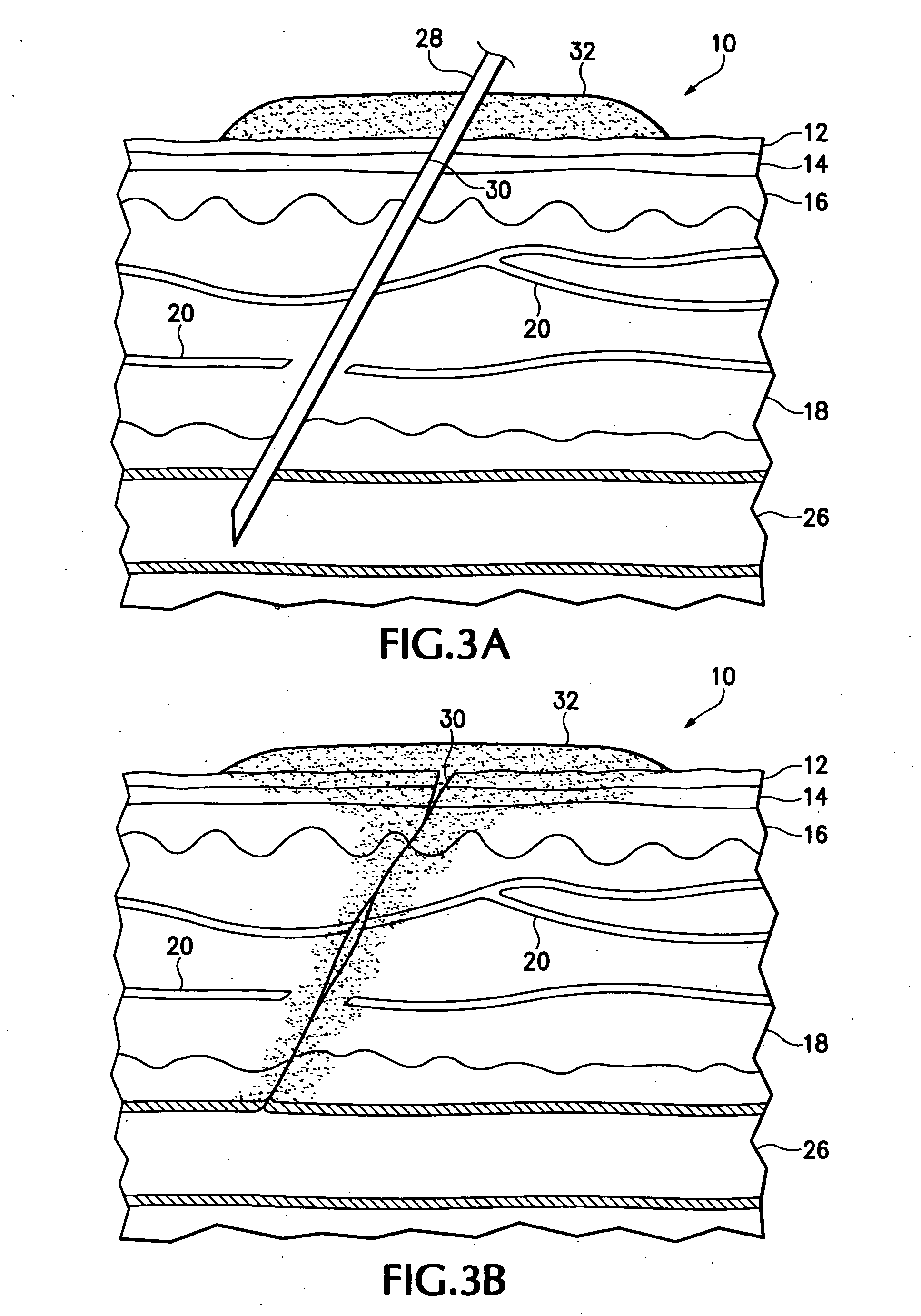Hemostatic compound and its use
a technology of hemostatic compound and compound, applied in the field of medicine, can solve the problems of requiring significant care, pain, strength and endurance, carpal tunnel syndrome and workers' compensation or disability claims, and manual methods often produce much discomfort for catheterization patients and clinicians, and achieve the effect of inhibiting bleeding
- Summary
- Abstract
- Description
- Claims
- Application Information
AI Technical Summary
Benefits of technology
Problems solved by technology
Method used
Image
Examples
example 1
[0058] A hemostatic compound includes the following substances: a vasoconstrictor, a sanitizer, a gelling agent, and a transdermal-enhancing agent. More particularly, this compound includes: epinephrine in a concentration by volume of between approximately 0.1% and approximately 40%, or more particularly between approximately 5% and approximately 20%; ethanol in a concentration by volume of between approximately 20% and approximately 90%, or more particularly between approximately 40% and approximately 80%; Carbomer™ 940 in a concentration by volume of between approximately 0.1% and approximately 5%, or more particularly between approximately 0.25% and approximately 1.0%; isopropyl myristate in a concentration by volume of between approximately 1% and approximately 15%, or more particularly between approximately 3% and approximately 10%.
example 2
[0059] A hemostatic compound includes the following substances: a vasoconstrictor, a sanitizer, a gelling agent, and a transdermal-enhancing agent. This compound further includes, in addition to those substances described in Example 1 herein, a disinfectant having a microbicidal property which persists as a microbicidally effective residue following its application. More particularly, the compound of Example 1 further includes chlorhexidine gluconate in a concentration of between approximately 0.5% and approximately 20%, or more particularly between approximately 1% and approximately 5%.
example 3
[0060] A hemostatic compound includes the following substances: a procoagulant, a sanitizer, a gelling agent, and a transdermal-enhancing agent. More particularly, this compound includes: chitosan in a concentration by volume of between approximately 2% and approximately 50%, or more particularly between approximately 10% and approximately 40%; ethanol in a concentration by volume of between approximately 20% and approximately 90%, or more particularly between approximately 40% and approximately 80%; Carbomer™ 940 in a concentration by volume of between approximately 0.1% and approximately 5%, or more particularly between approximately 0.25% and approximately 1.0%; isopropyl myristate in a concentration by volume of between approximately 1% and approximately 15%, or more particularly between approximately 3% and approximately 10%.
[0061] Other examples and embodiments of the invention are contemplated and are within the spirit and scope of the invention. For example, phenylephrine o...
PUM
| Property | Measurement | Unit |
|---|---|---|
| viscosity properties | aaaaa | aaaaa |
| viscosity properties | aaaaa | aaaaa |
| evaporation time | aaaaa | aaaaa |
Abstract
Description
Claims
Application Information
 Login to View More
Login to View More - R&D
- Intellectual Property
- Life Sciences
- Materials
- Tech Scout
- Unparalleled Data Quality
- Higher Quality Content
- 60% Fewer Hallucinations
Browse by: Latest US Patents, China's latest patents, Technical Efficacy Thesaurus, Application Domain, Technology Topic, Popular Technical Reports.
© 2025 PatSnap. All rights reserved.Legal|Privacy policy|Modern Slavery Act Transparency Statement|Sitemap|About US| Contact US: help@patsnap.com



